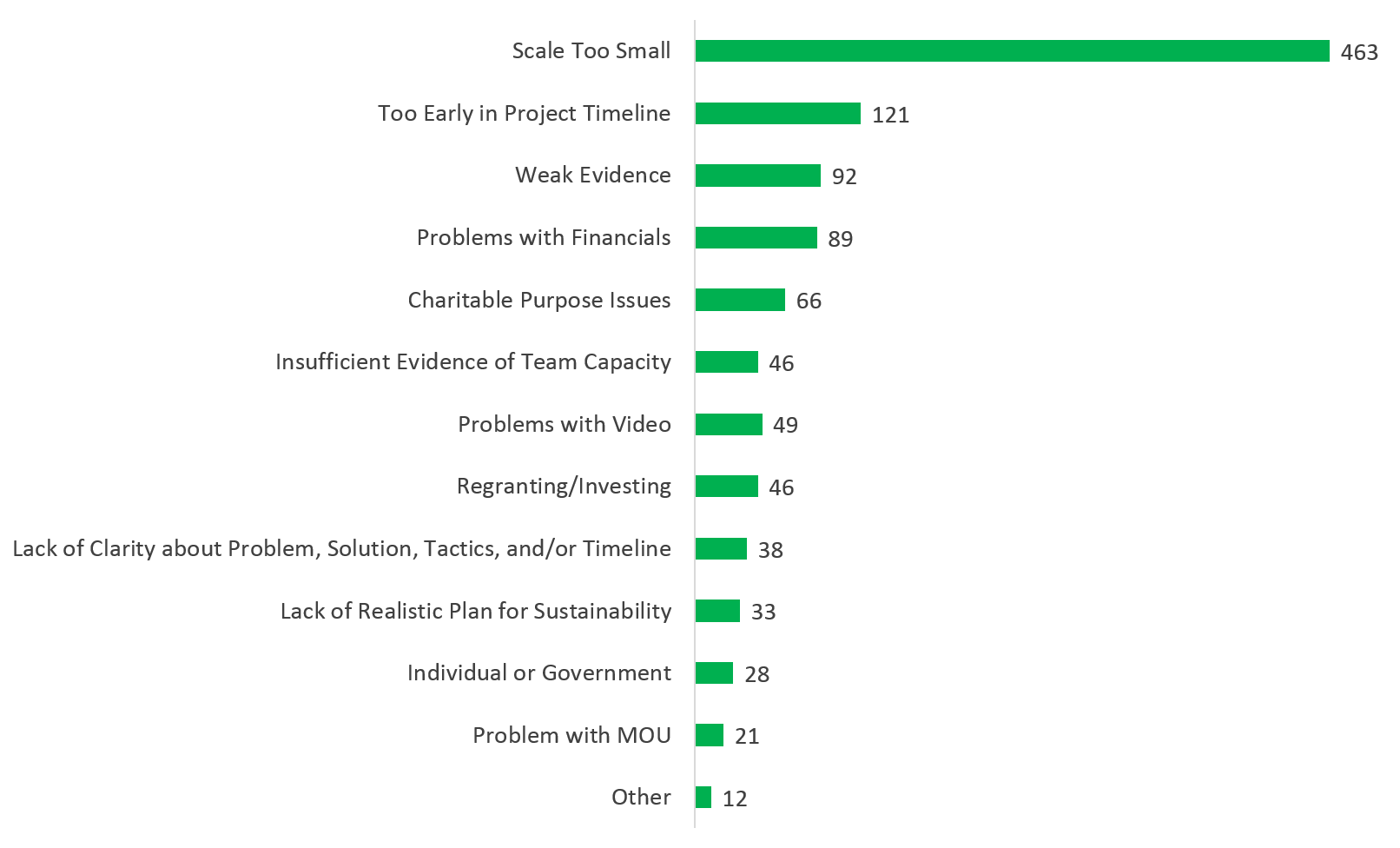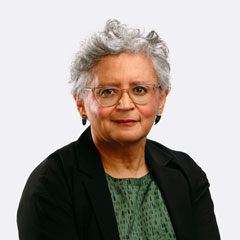When the application period closed for 100&Change on October 3, 2016, we had received 1,904 applications for an incredibly diverse range of creative, thoughtful, and potentially effective projects.
Above all, we were inspired by the number of people and teams who had taken the time and energy to participate, and who shared our belief that solutions are possible for even the most daunting global problems.
Even though we knew deadlines were motivating and expected a wave of applications in the final 24 hours (in fact, we upgraded our servers to prepare for this tsunami), we were surprised to see that more than 80 percent of all applications arrived in the last three days.
Over the next two weeks, MacArthur staff worked to review each 100&Change submission to ensure that it complied with the application requirements and rules before advancing on to the next stage of judging by members of our evaluation panel.
Our application of eligibility criteria was strict but, to the best of our ability, fair and consistent. Applications that were ruled to out of compliance with 100&Change guidelines were given a second and, often, even a third look. Our intention was to avoid all errors and, most especially, to avoid disqualifying valid submissions.
This initial screen focused on questions such as: are applications responsive to the questions we had posed? Do they conform to administrative requirements? Are they complete? Are the organizations involved legally able to receive funds? Are the projects the right scale for a $100 million grant?
We found that even this basic review took time. And despite our efforts to create bright lines, sometimes there were questions that needed to be addressed in more detail or required judgement. For example, individuals were not eligible to participate, but attempted to do so by creating a sole proprietorship or LLC with only themselves on staff. While the call was for solutions that had some evidence to show they were effective, many applications sought to launch R&D processes for completely speculative endeavors which, if successful, would indeed make significant progress towards an enduring solution to a meaningful problem but were by nature almost completely devoid of supporting evidence.
In the end, we had 800 valid applications, and those rejected tended to fall into a number of categories or have similar problems (see chart below), the top five of which were:
- Too small in scale (463). We received a surprising number of proposals for projects with budgets well below $100 million. The aspiration of 100&Change is to address problems and support solutions that are radically different in scale, scope, and complexity than what foundations typically fund. We are looking for $100 million projects.
- Too early in project timeline (121). Although we emphasized in our call that we sought projects with a strong base of existing evidence, we received many blue sky research and development proposals or for proposals to run pilot studies. For these, strong evidence that the proposed solution will address the identified problem was lacking, often because projects were at an early stage in their development or evolution.
- Weak evidence of effectiveness (92). Others were not R&D projects as such, but offered no strong evidence that proposed solutions will address the problem identified. We expected to see one or more of the following types of evidence cited in applications: data or findings from external evaluation of a pilot project or experimental study, citations to peer-reviewed research indicated a strong scientific consensus, a strong logic model, and documentation of a detailed pathway from the proposed actions to specific outcomes.
- Problems with financials (89). The application required three years of audited financial statements in English or a letter of explanation signed by the chief financial officer of the lead applicant. For some applications, the financials were inaccessible, not in English, or unaudited with no explanation provided.
- Private benefit (66). 100&Change funds must be used solely for charitable purposes and not result in more than incidental private benefit to other people, organizations, or entity that is a necessary byproduct of the accomplishment of the charitable purpose. From the information in the application, it appears that the private benefit is more than incidental.
Reasons for Invalidating Proposals During Administrative Review

These reviews occasionally caused some heartbreak – otherwise promising ideas were attached to proposals that were abandoned before they were completed, or apparently promising collaborations lacked any evidence of agreement between potential participants.
We next began assigning valid proposals for review by our outside judges. Since then, we have received input and suggestions from our judges, which will be the focus of future blog posts.




